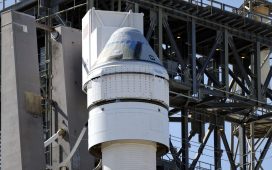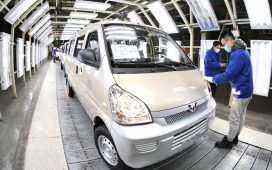DETROIT — Fiona Meyer-Teruel grew up enthralled by the wonders she read about in science-fiction books. At age 26, she’s a General Motors battery engineer helping to turn some once-fantastical concepts into reality.
“What really drew me toward automotive … is that thought that this is the area where you can invent the future and really create those scientific marvels,” she told Automotive News.
Meyer-Teruel is now a lead technology development engineer behind GM’s new wireless battery management system, which will debut on the GMC Hummer pickup next year and eventually make its way across GM’s entire lineup.
She’s “very innovative,” said Tim Grewe, GM’s director of global battery cell engineering. “She saw a need here. She started developing these wireless systems against these very demanding requirements for the Ultium system. She considered a lot of options. She worked with the supply base and Analog Devices to make this industry-first solution.”
The wireless battery-management system was designed to help GM get EVs to market faster and allow a common set of battery components to power a wide range of vehicles. The system, developed with Analog Devices Inc., can be updated over the air to incorporate new technology quickly, improves range by reducing weight and allows used-up batteries to be converted into clean power generators. GM says the wireless system is an industry first and a pillar of its proprietary Ultium battery platform.
“This modular concept of designing batteries … makes it very easy to manufacture and to service them,” said Meyer-Teruel. “Right now, there’s obviously not a ton of EVs in the market, but this gives us the opportunity to really expand that and use a lot of different platforms to create the right fit for everyone.”
Meyer-Teruel has worked for GM since 2016, starting in the automaker’s rotational program after graduating from Stanford University. As a student, she had internships and worked on research projects involving satellites, ranging from small units to large telecommunication devices for geostationary orbit.
“I really like that work, but there are pretty long lead times on satellites. For those big telecom ones, it can take 11 years to design and build those,” she said. She transitioned to the auto industry for “really big projects that require fast-paced teamwork and creative problem-solving.”








